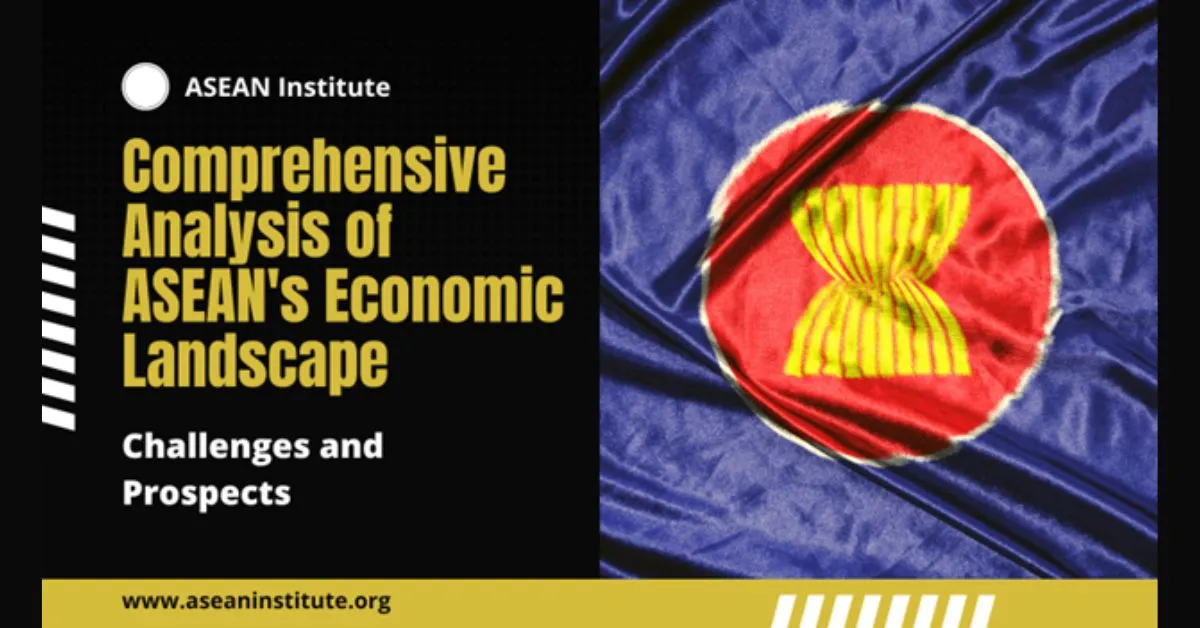The Association of Southeast Asian Nations (ASEAN), a vibrant amalgamation of diverse economies, stands at a pivotal juncture, confronting a spectrum of economic challenges intricately woven into the fabric of its regional dynamics. This report delves into these challenges, each a thread in the complex tapestry of ASEAN’s economic narrative, ranging from the resuscitation of the tourism sector to the intricacies of foreign direct investment (FDI) flows and the geopolitical ramifications of the Myanmar crisis.
1. Tourism Sector’s Tumultuous Journey
Commencing with the tourism sector, an erstwhile economic linchpin for countries like Thailand, Malaysia, and the Philippines, we observe a landscape marked by cautious optimism. The anticipated resurgence of this sector, post-pandemic, is mired in uncertainties, particularly concerning the return of Chinese tourists, a demographic whose absence has left palpable voids in the market.
2. The Global Slowdown and Its Ripple Effects
Segueing into the broader macroeconomic milieu, the global slowdown casts long shadows over ASEAN’s economies. (International Monetary Fund, 2022).The interplay between reduced global demand and domestic economic resilience, especially in nations with robust internal markets like Indonesia and the Philippines, presents a complex scenario. It highlights the delicate balance between external economic dependencies and internal growth levers. (Asian Development Bank, 2022).
3. Inflation and Monetary Policy: A Tightrope Walk
Inflation, a global specter, looms large, prompting central banks across the ASEAN bloc to embark on a tightrope walk of policy adjustments. The intricate dance of raising policy rates in response to inflation, juxtaposed against the backdrop of global interest rate trends and currency fluctuations, underscores the nuanced economic policymaking challenges inherent in the region.
4. FDI Trends: Diversification and Strategic Shifts
The domain of FDI unveils a narrative of strategic economic positioning within ASEAN. (United Nations Conference on Trade and Development, 2021). Nations like Singapore and Vietnam emerge as exemplars of attracting investment, riding the waves of shifting global production bases and trade conflicts. This section will unravel the layers of ASEAN’s FDI allure, examining how geopolitical shifts and economic policies coalesce to shape investment landscapes.
5. China’s Economic Health: An ASEAN Barometer
China’s economic vigor, or lack thereof, functions as a barometer for ASEAN’s economic health. The multifaceted impact of China’s reopening, amidst a global pandemic landscape, reverberates through ASEAN’s trade corridors and production networks, presenting a dual-faceted scenario of challenges and opportunities. (World Bank, 2022).
6. The Myanmar Quagmire: ASEAN’s Diplomatic Tightrope
The political and economic crisis in Myanmar presents a unique challenge, transcending economic ramifications to touch upon ASEAN’s very ethos and diplomatic acumen. This section will dissect the intricate interplay between ASEAN’s diplomatic initiatives and the economic stability of the region, highlighting the nuances of regional politics and its economic implications.(ASEAN, 2022).
7. Sustainable Growth: The Future Trajectory
Indonesia’s chairmanship of ASEAN brings a renewed focus on sustainable economic growth. This pivotal shift towards sectors like food and energy security, health, and financial stability, is emblematic of ASEAN’s forward-looking vision. An analysis of these sectors provides insights into the potential trajectories and long-term economic strategies of the region.
Conclusion: Navigating the Future
References:
World Bank. (2022). Tourism in East Asia and the Pacific: A Recovery in Sight? Retrieved from World Bank
International Monetary Fund. (2022). Regional Economic Outlook: Asia and Pacific. Retrieved from IMF
Asian Development Bank. (2022). Asian Development Outlook 2022: Economic Trends and Macroeconomic Policies. Retrieved from Asian Development Bank
United Nations Conference on Trade and Development. (2021). World Investment Report 2021: Investing in Sustainable Recovery. Retrieved from UNCTAD
ASEAN. (2022). ASEAN Statistical Yearbook 2022. Retrieved from ASEAN











